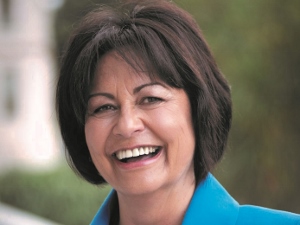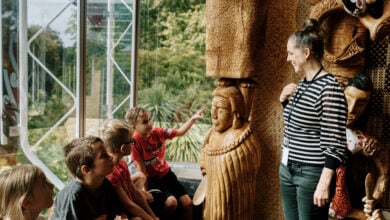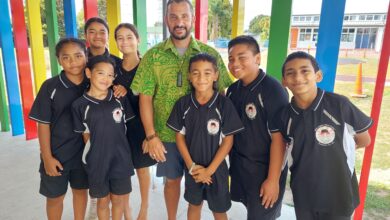International Summit on the teaching profession

 The fourth International Summit on the Teaching Profession 2014 (ISTP) took place in Wellington on March 28-29 2014. It was jointly organised by our Ministry of Education, the Organisation for Economic Co-operation and Development and Education International and was attended by education ministers, teacher union representatives and teaching leaders from 26 OECD countries.
The fourth International Summit on the Teaching Profession 2014 (ISTP) took place in Wellington on March 28-29 2014. It was jointly organised by our Ministry of Education, the Organisation for Economic Co-operation and Development and Education International and was attended by education ministers, teacher union representatives and teaching leaders from 26 OECD countries.
School News asked the Minister of Education Hekia Parata for her feedback on the summit.
School News
Excellence, Equity and Inclusion were the three goals put forward at the 2014 International Summit on the Teaching Profession. What steps do New Zealand’s school teachers need to take to reach those goals?
Hekia Parata
These goals are something we all need to jointly own and work together on. But we know the quality of teaching and leadership are the most important in-schools factors for raising achievement. So clearly teachers have a critical role.
Aside from all the other work being done to improve student achievement, the Government has recognised that more needs to be invested in our principals and teachers. They’re a vital key to kids leaving school with improved achievement and prospects in life.
The $359 million package for Investing in Educational Success is a huge vote of confidence in the profession. It’s also recognition of the big gains that can be made by making sure that the quality of teaching is lifted and that teaching practice and collaboration between schools grows stronger
.
The impact of highly effective teaching is cumulative – so relatively modest increases make a big difference over time. Added to this, we’re spending a lot more on schools and classrooms to make sure that teachers have the right environment to teach in, and that work best for kids’ learning. We’ve put an extra $511 million in this financial year to upgrade and expand the school property portfolio.We’ve also made a significant investment of nearly $700 million in digital learning infrastructure and that will make a real difference for teachers and kids.
We launched a new digital portal in March for teachers, students and education administrators – it’ll provide access to trusted, high quality learning resources and allows safe online collaboration
So when you put together these sorts of initiatives, you can see we’re working hard to create a much better environment for teaching professionals. And that means they’ll be able to do their very best for our kids.
SN
How will the new Executive Principal and Expert Teacher roles contribute to teachers reaching those goals?
HP
In short, these roles are about using the best to get the best out of others.
The Executive Principals will be highly capable people with a proven track record. They are going to work across a community of schools and will be supporting and mentoring other principals. They’ll use their expertise to help lift the leadership across schools. This role focuses on the quality of leadership which we know is a major factor in schools getting the very best out of their kids.
An Executive Principal will have specific objectives for student achievement across their community of schools.
In the case of Expert Teachers, again it’s a matter of their expertise being used to draw out the very best in their colleagues. They will work with the Executive Principals and will have particular expertise in areas like maths, science, literacy and digital technology. They’ll also work across communities of schools and will help lift teaching practice and student achievement.
We’ve also got the role of Lead Teachers, who are highly capable teachers. They will be role models for other teachers within their own school and in their communities of schools.
These new roles allow good teachers to further their careers, but to do it while they’re still in front of kids in the classroom. That’s where they want to be and it is where they are most needed.
There’s also the $10 million we’re putting into the teacher-led innovation fund. It’s going to enable team-based, teacher-led research and development at a practical level, working within schools or across schools.
The final shape of all the roles has been put together by a working group that involves key sector representatives. We needed their input to help determine how these roles would fit and work best in our schools and deliver the outcomes we’re all after.
SN
Were you satisfied with New Zealand’s placing in the 2012 Pisa survey and how can we improve our position before the next one?
HP
PISA has shown that we’re doing better than the OECD average in reading, maths and science, and some of our kids achieving at the highest levels are doing as well as the best in the world.
But we already knew we had to do better across the board for all of our kids to succeed. And that’s where our energy and investment have been focused.
There were a range of reasons that led to New Zealand’s performance in PISA slipping since the early 2000s. We know what they are and we’re acting on them.
For example, there’s been under-investment in raising teacher practice. We have the Investing in Educational Success package that will introduce new roles in our schools and classrooms.
We’re also reviewing professional learning and development to make sure that it’s delivering what works best for teachers and principals.
There’s also been a $10.5 million programme set up to boost maths and science teaching.
At the same time, we’re doing targeted work such as initiatives to raise the achievement of Māori, Pasifika and children with special needs.
We have a Better Public Service target of 85 per cent of 18 year-olds having an NCEA Level 2 or an equivalent qualification by 2017 and we’re seeing dividends there. The provisional results for last year show that 76.8 per cent of students left school with at least NCEA Level 2, compared with just over 74.3 per cent in 2012. That’s an increase of 10.3 percentage points since 2008.
So we’re using a mixture of approaches and innovation to address student achievement.
The whole system has to be involved in lifting achievement, and that’s the approach we’re taking so that five out of five kids achieve the best they can.
SN
What did you see as the most important outcome of the summit for you personally, and for the New Zealand education system as a whole?
HP
It was fantastic opportunity for all of those involved. We had 26 international delegations from the top-performing education systems here to share successes and challenges.
Everyone, including New Zealand, went away with a lot of food for thought. For New Zealand, there was some very heartening comment about what we’re doing. One of those who came here was Arne Duncan, the US Secretary of Education. He told us he sees New Zealand as way ahead of America in creating high-quality early learning opportunities.
Many of those who came here took away ideas from what we’re already doing, and we’ve been able to hear about what is working really well in other countries and think about how we might apply some of that here.
Hosting the summit is certainly one of the true highlights of my time as Education Minister and reinforced that we have to be absolutely relentless and open to new and creative ways of doing the best for our kids.
Our delegation, which included SPANZ, PPTA and NZEI, developed two key actions as a result of the discussion and has committed to making real progress on these ahead of next year’s summit in Canada. Those actions are adopting a systemic approach to professional earning communities across the country and making visible the child-centre pathway for each learner from ECE to tertiary. They’re great goals and I’m absolutely committed to them.









